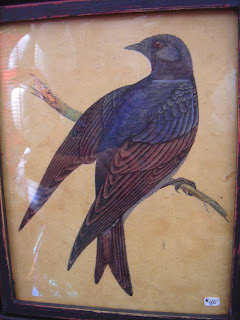Country Living Magazine is another favorite, especially the October through December issues. My November issue is still in its plastic mailer, and I am saving it for after Halloween.
The fair was held at Stone Mountain Park, which I must admit I've never had much of a desire to visit. In my mind it was always a big Confederate Memorial Carving and laser light show, nothing more. After leaving the fair, I decided to drive around and see what else goes on at the park. It turns out, a lot! It was very pretty, and I found a nice hiking trail around the lake that took about an hour. There are many trails, aside from the one that takes you up to the summit, and plenty of outdoor activities including fishing, camping, and golf.
Here are some photos from the fair itself. Although I was tempted more than once, I did not buy a single thing!
 This huge pumpkin and gourd display would be
This huge pumpkin and gourd display would be
very impressive on someone's front lawn!
 Hand-carved Noah's Ark- amazing!
Hand-carved Noah's Ark- amazing!
 Cute party witch hats, but clearly meant for a
Cute party witch hats, but clearly meant for a
smaller head than mine!
 Sugar molds are a popular way to
Sugar molds are a popular way to
bring candlelight into a room
 Hand-carved Noah's Ark- amazing!
Hand-carved Noah's Ark- amazing! Cute party witch hats, but clearly meant for a
Cute party witch hats, but clearly meant for asmaller head than mine!
 Sugar molds are a popular way to
Sugar molds are a popular way tobring candlelight into a room
 Carved out of gourds
Carved out of gourds A quirky way to fill an empty wall
A quirky way to fill an empty wall No more than one head per body, please
No more than one head per body, please Watering cans and buckets-
Watering cans and buckets-I can see them used as casual containers
for mixed wildflower bouquets
 French market baskets
French market baskets
.JPG)










































